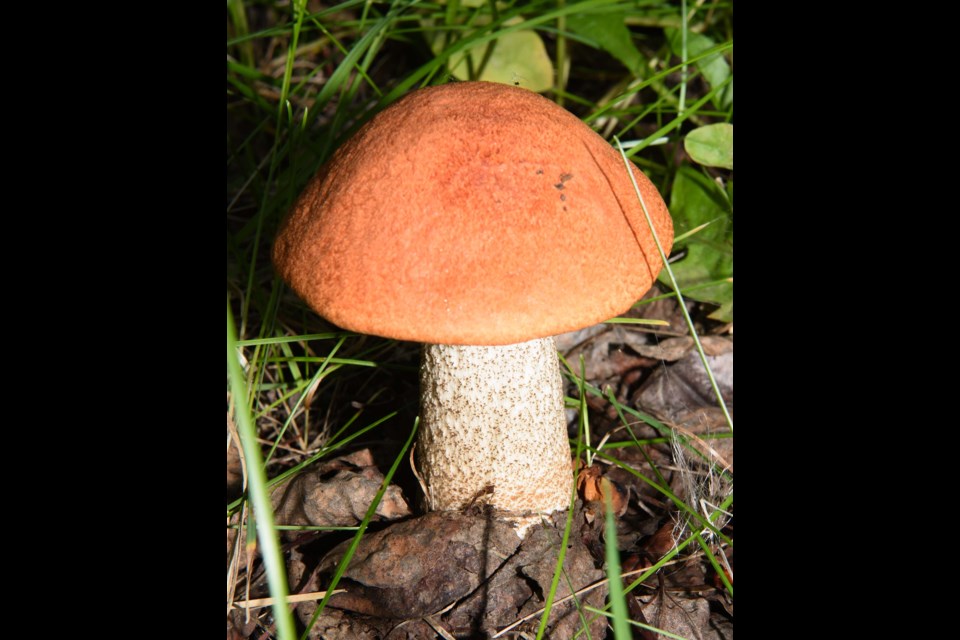Mushroom mania returns to Alberta this month as hundreds of fungi fans rally for the province’s annual mushroom showcase.
About 1,100 people will be at the University of Alberta’s Botanic Garden this Sunday, Aug. 13, for the Alberta Mycological Society’s annual City of Champignons Wild Mushroom Expo. Billed as “the greatest show from Earth,” the show sees hundreds of amateur mycologists gather to share their love for mushrooms.
Society members will fan out across Alberta the day before the expo to collect and identify as many mushrooms as they can find, said expo organizer Melanie Fjoser. Those mushrooms will be on display on a massive table on Sunday in the botanic park’s Pine Pavilion, with separate tables for edible, medicinal, and poisonous varieties.
Fjoser said guests at the mushroom expo can sample gourmet mushrooms and mushroom soups prepared by volunteer chefs, check out mushroom field guides and merchandise, go on guided mushroom tours of the garden, and learn about zombie mushrooms.
“We’re talking about fungi that take over insects,” Fjoser said — a topic the society picked because of recent interest in the TV show The Last of Us (which features a fungi-related zombie apocalypse).
“It totally takes over their bodies.”
They’re everywhere
Alberta has at least 6,000 known species of mushroom, or about 12,000 if you count the microscopic ones, said Martin Osis, a longtime member of the Alberta Mycological Society. Some are edible or medicinal, while others trap carbon emissions or absorb heavy metals.
Mushrooms are the fruits of fungi, which are fibrous creatures that break down organic matter and have close relationships with plants, Osis said.
“Each tree typically has dozens of fungal partners,” he said, which process debris into nutrients for the tree in exchange for sugars.
Other fungi are parasitic, killing and breaking down old trees so younger ones can emerge, Osis said. Zombie fungi use psychedelic substances to force their hosts to die in high places, giving them an elevated spot from which to spread spores.
Mushrooms have exploded across St. Albert in recent weeks thanks to frequent rains, said Eric Whitehead, co-owner of the St. Albert-based mushroom company Untamed Feast. Foragers have likely seen many red tops in area forests (look for a domed red cap with a spongy, porous underside atop a plump white stem with brown flecks growing near poplars) and may also have found the delicious bear’s head tooth on fallen aspen trees.
“It looks like a beard with a whole bunch of white icicles,” he said of the bear’s tooth, and tastes like crab.
While there are thousands of mushrooms in Alberta, only about a dozen are worth eating, Osis said. The best way to learn which ones to munch is to go out with an experienced forager.
Whitehead advised beginners to start with the red cap and bear’s head tooth mushrooms, as they were easy to recognize and generally safe to eat. Giant puffballs are safe to eat if they’re still white all the way through, and often reappear in the same spot every year. Leave white mushrooms like those ones on your lawn to experienced foragers — they could be delicious spring agarics, but they might be deadly destroying angels.
“If you have to look the mushroom up, you’re not ready to eat that mushroom,” Whitehead said.
Mushrooms are ephemeral and unpredictable, and can sometimes disappear for decades at a time, Osis said. Oftentimes, the only way to find them is to be in the right place at the right time.
“That’s the mystery of fungi,” he said.
The mushroom exposition is free with admission to the botanic garden and runs from 11 a.m. to 4 p.m. Visit www.albertamushrooms.ca/event/wild-mushroom-expo for details.




